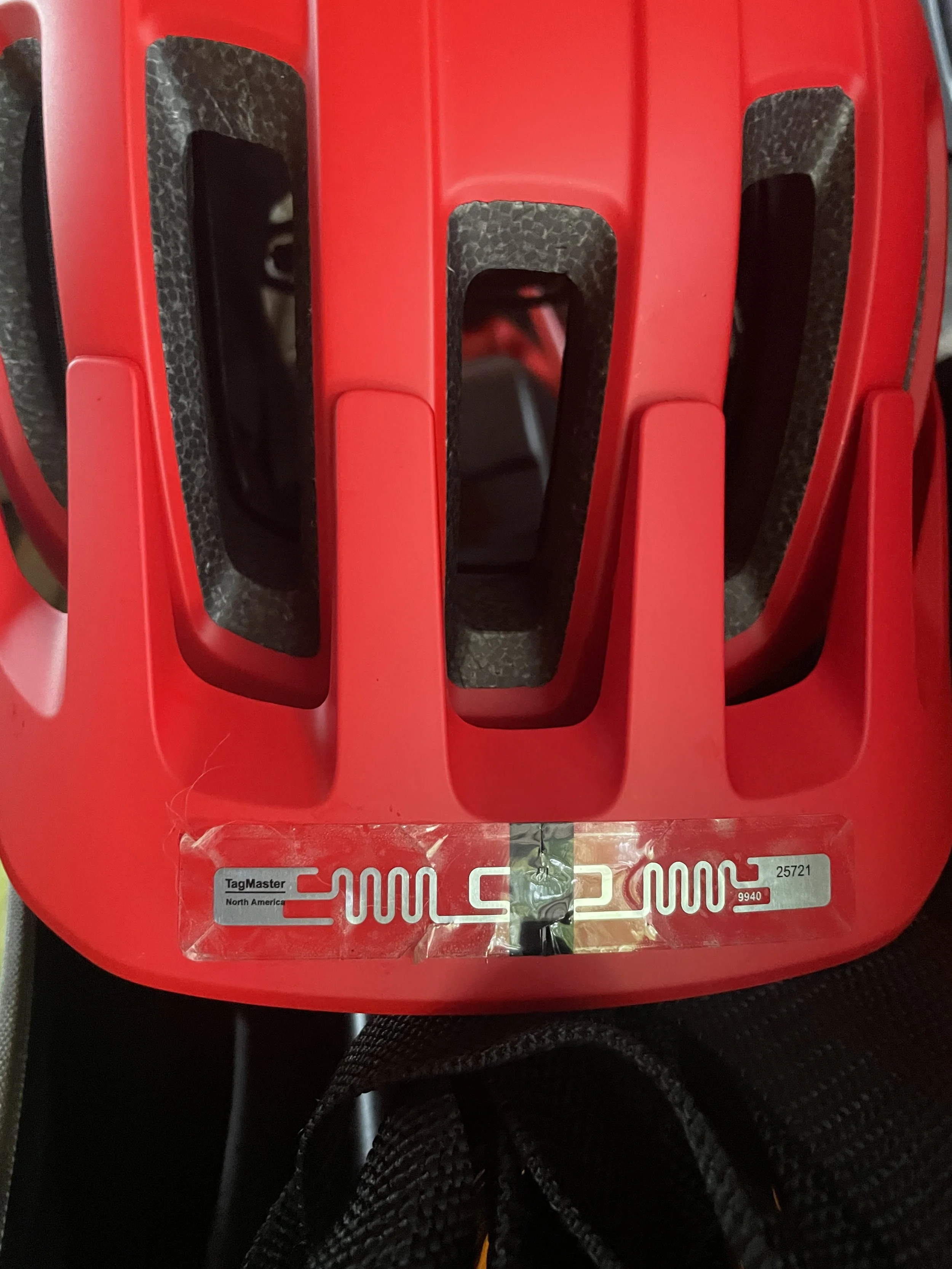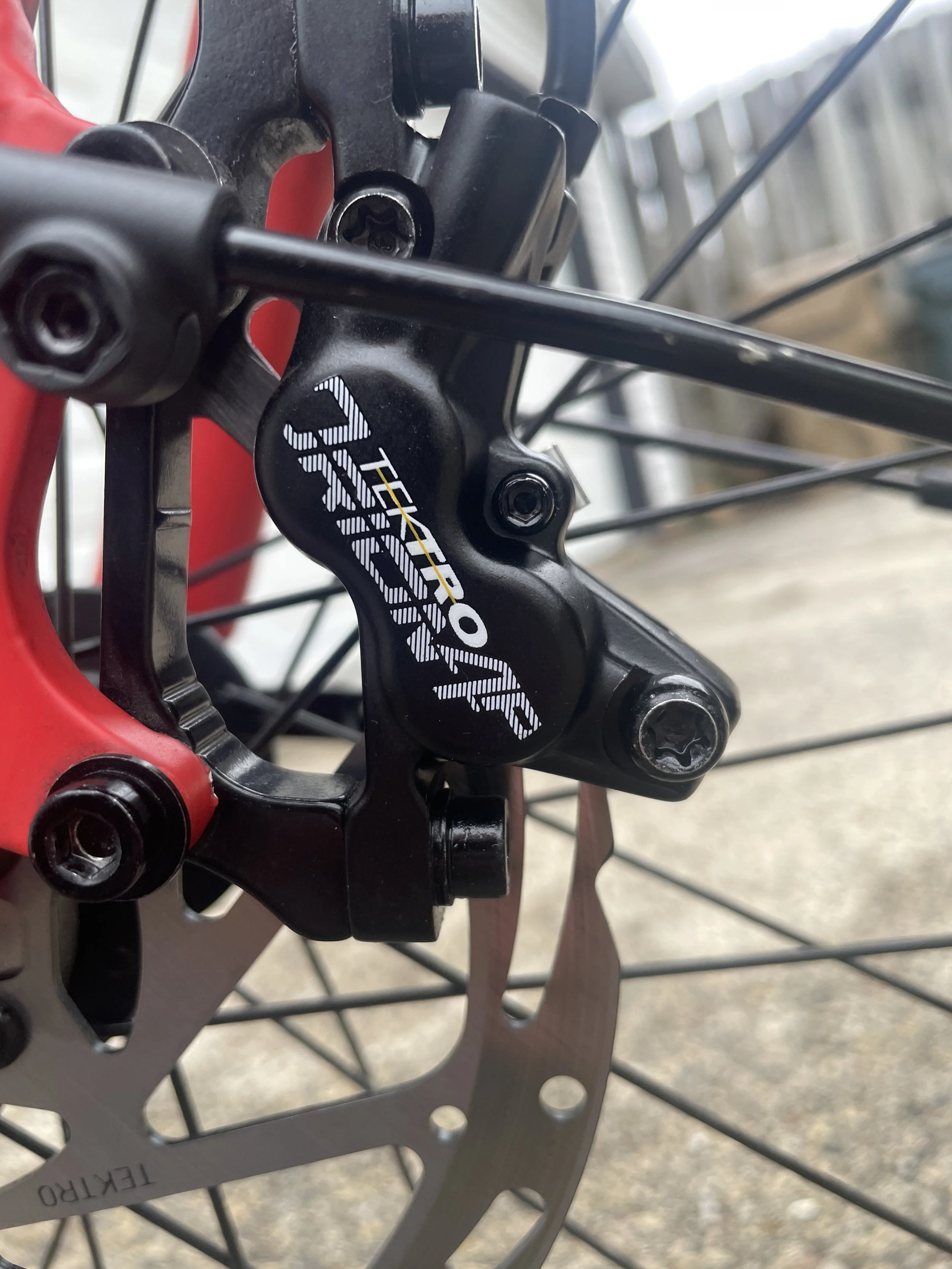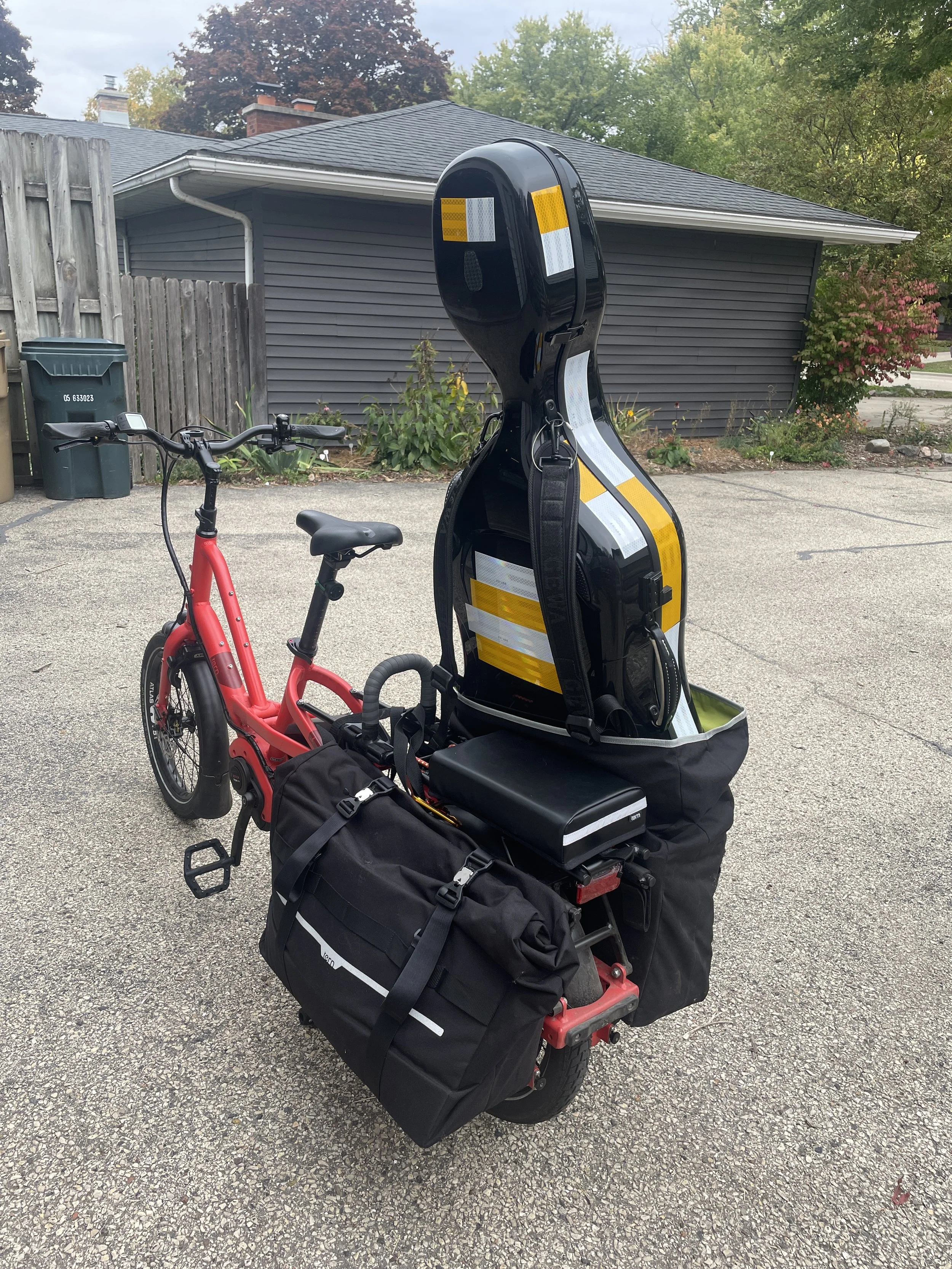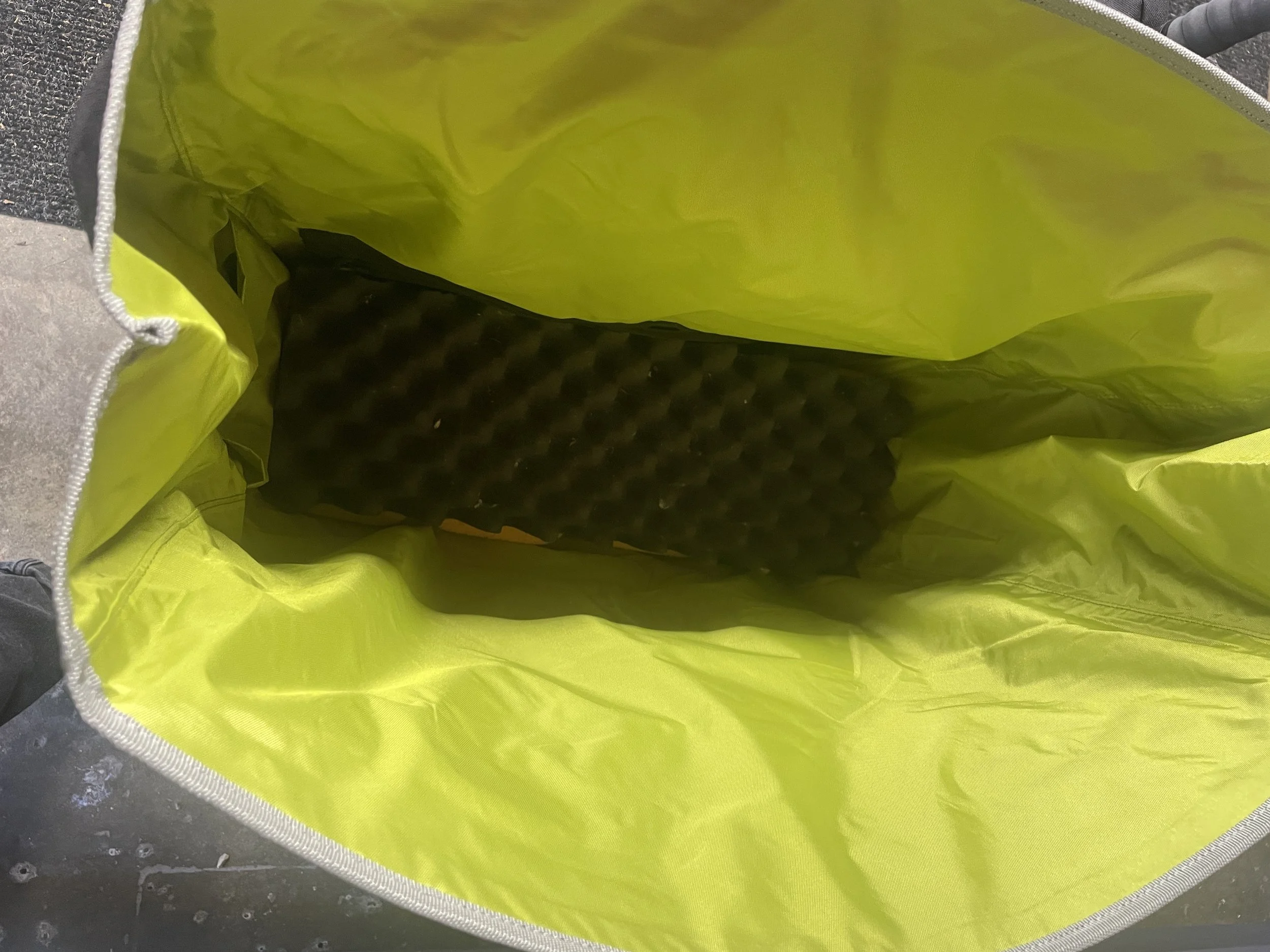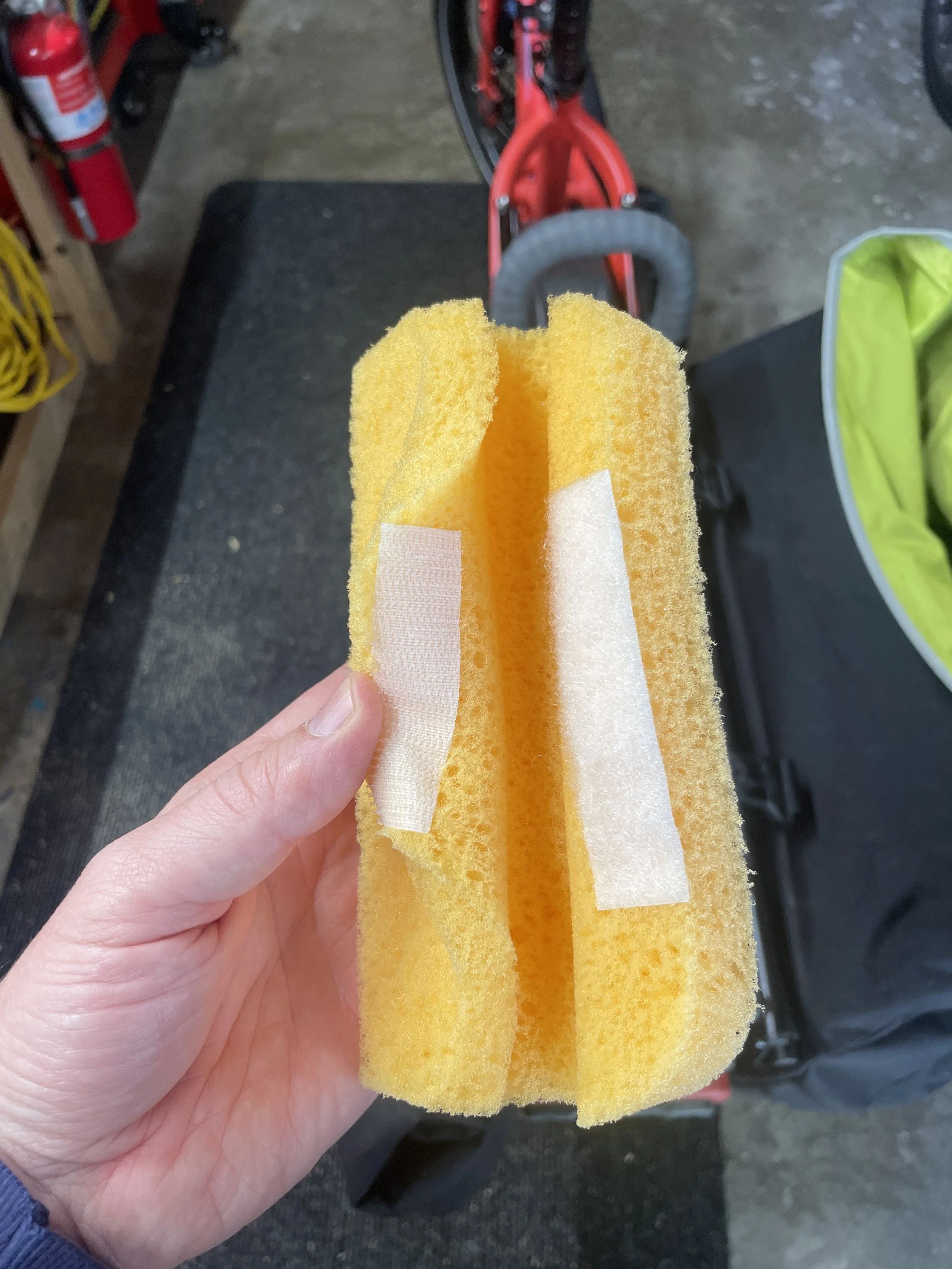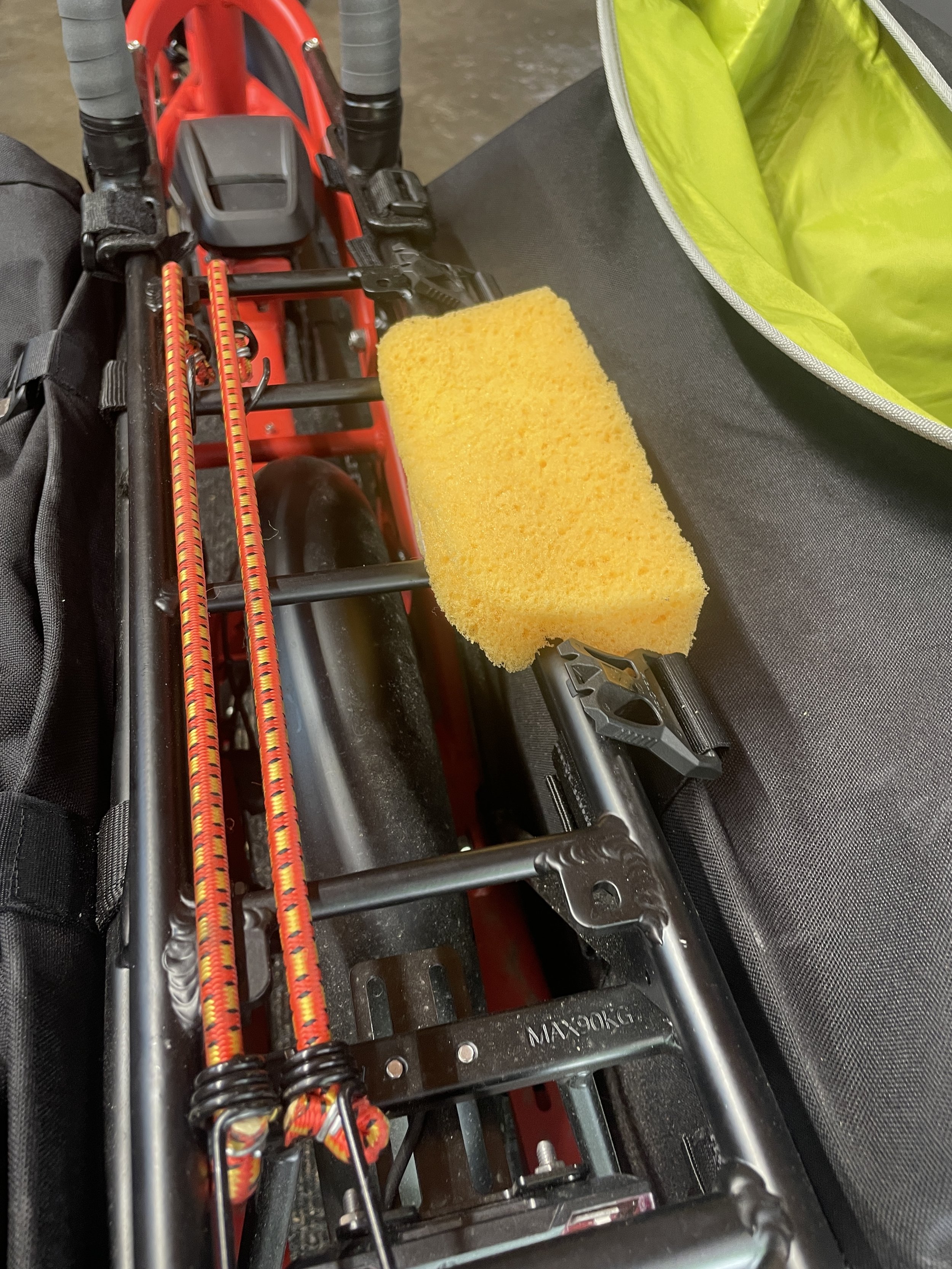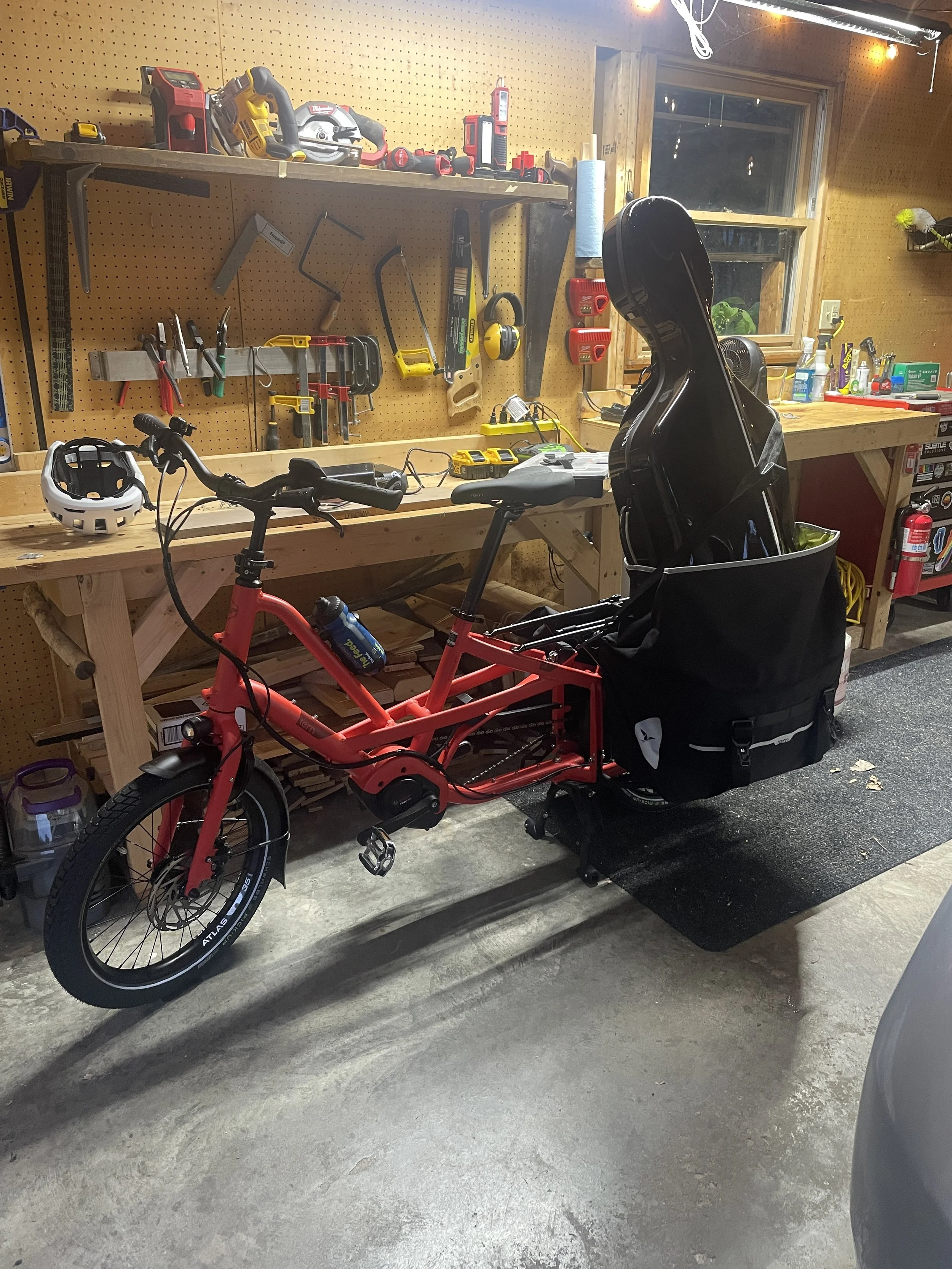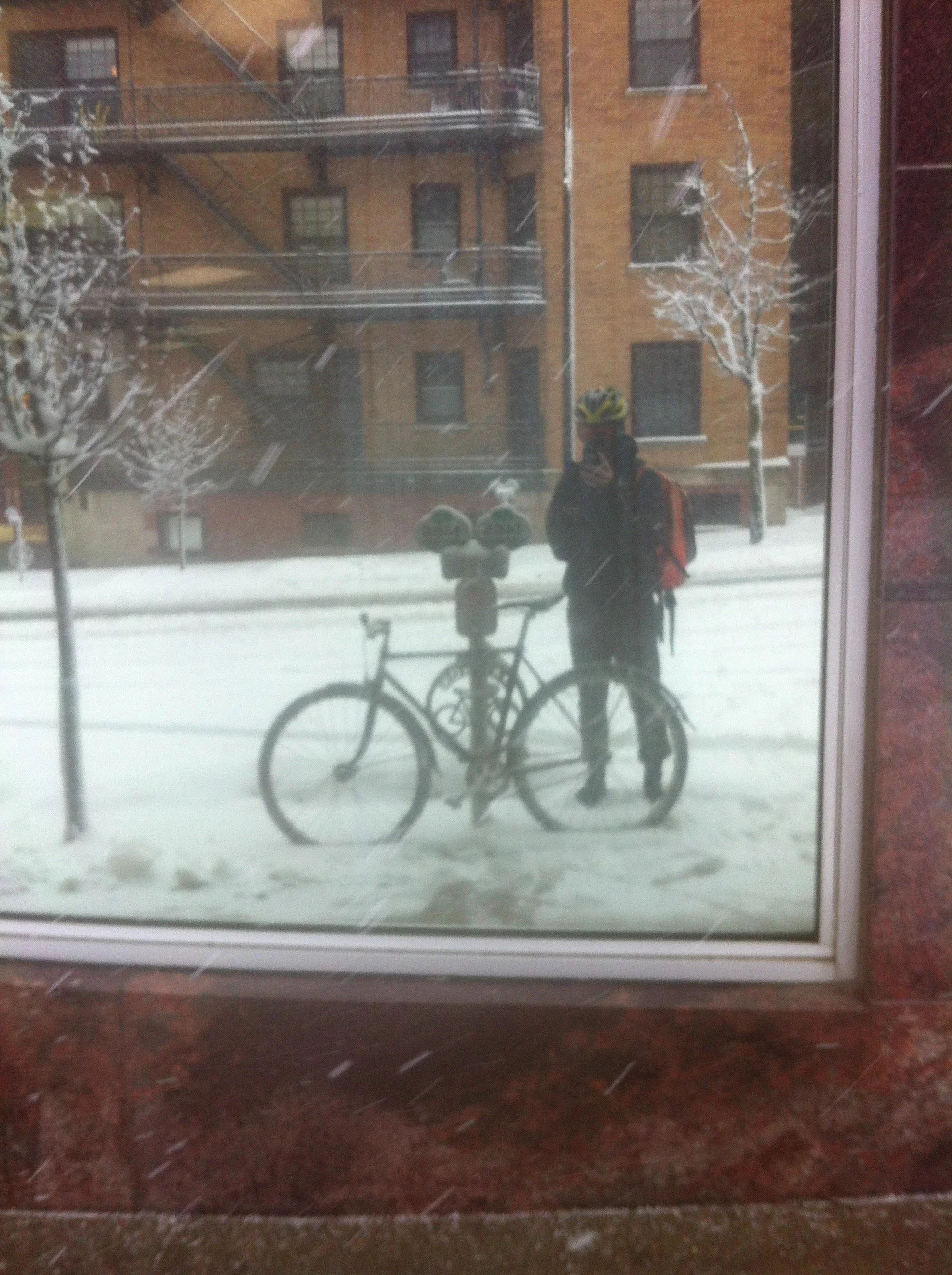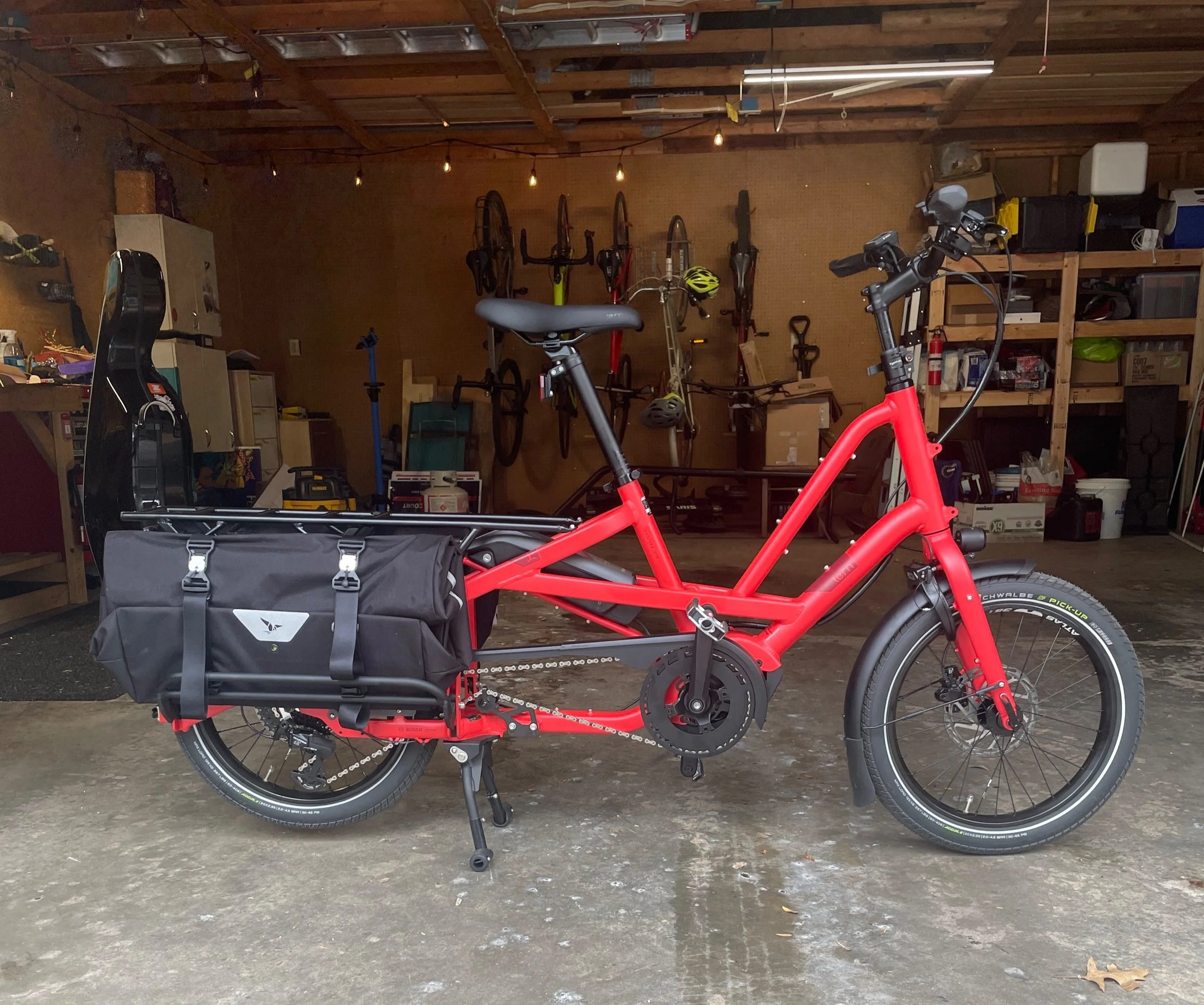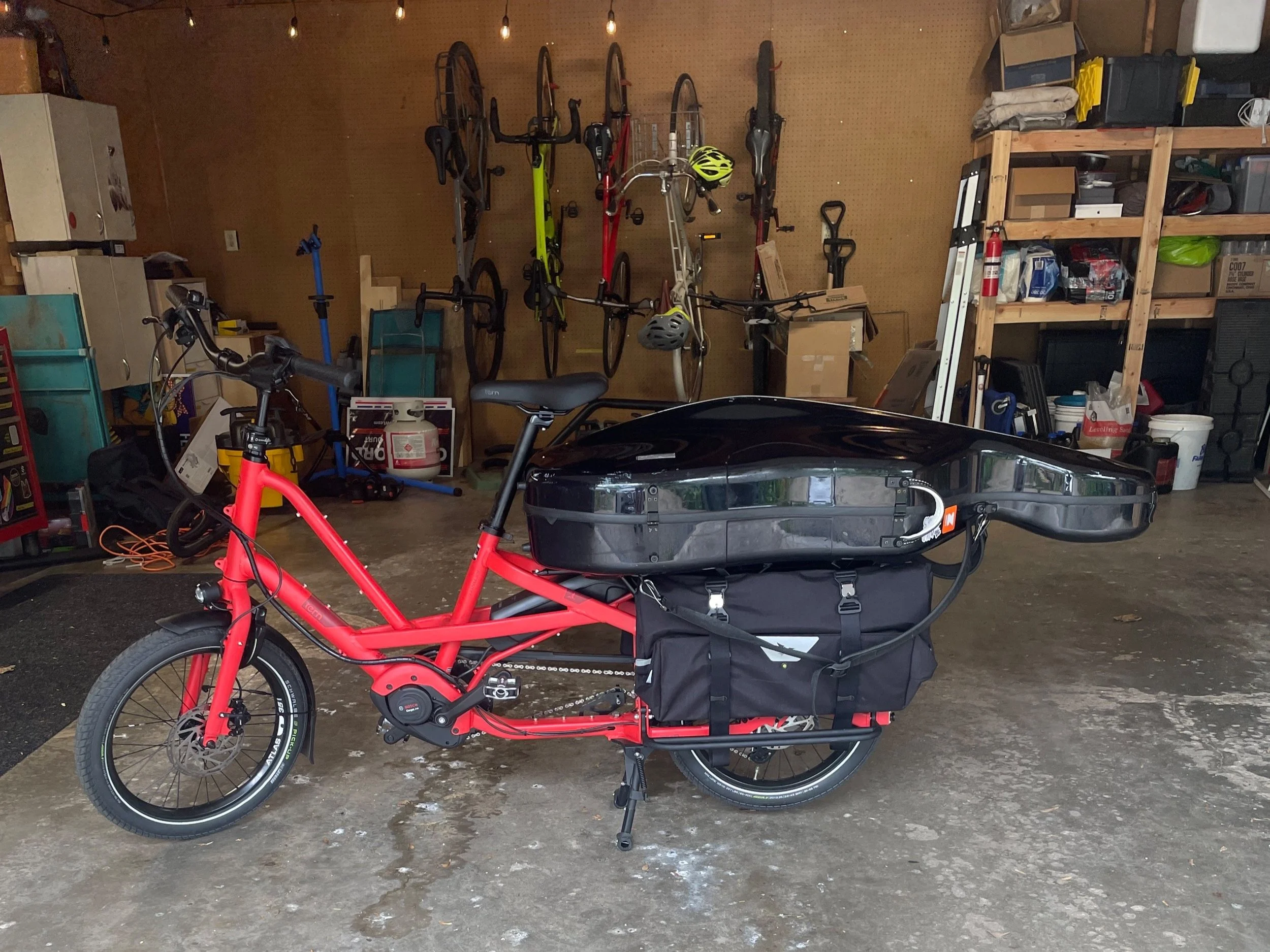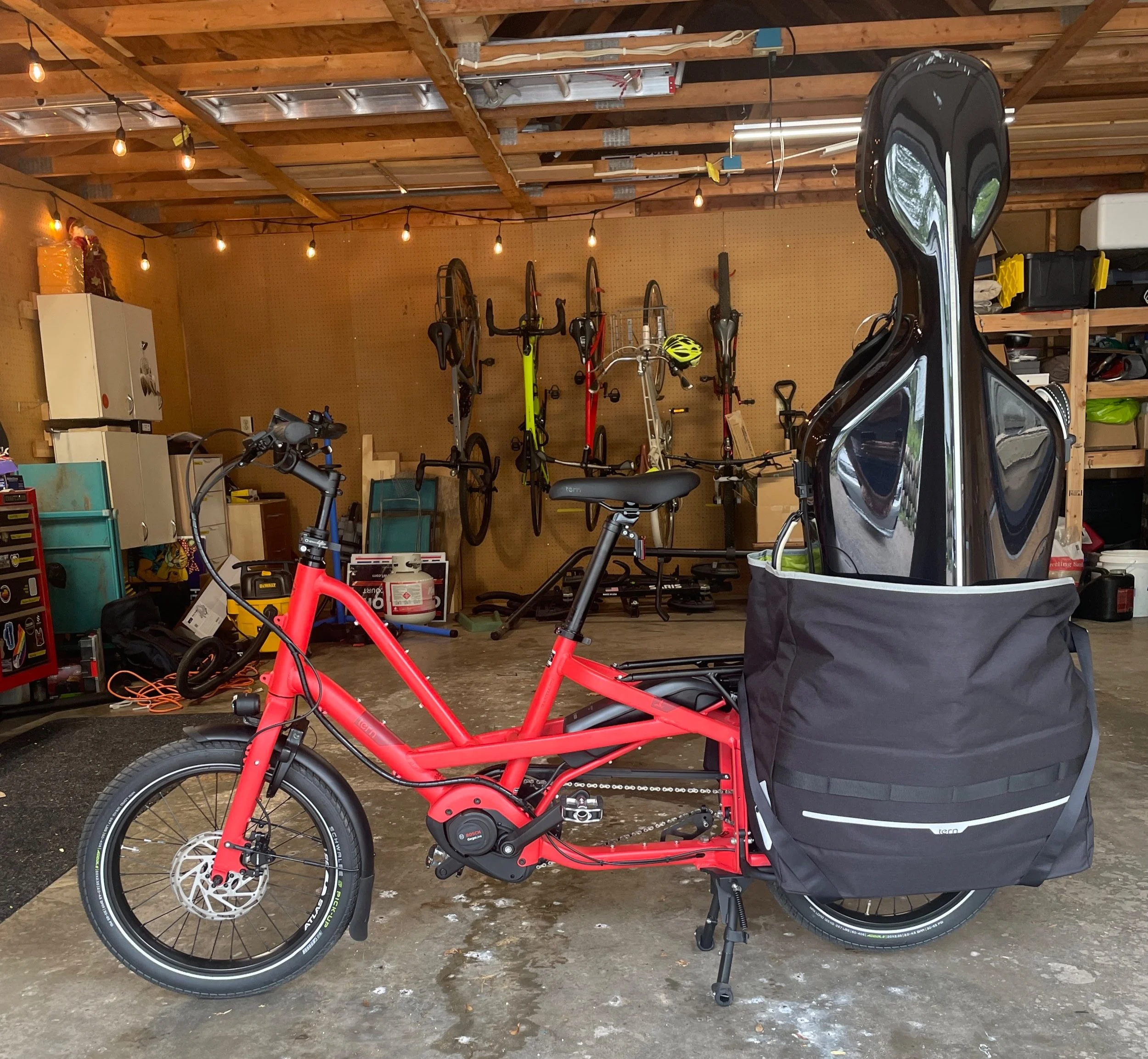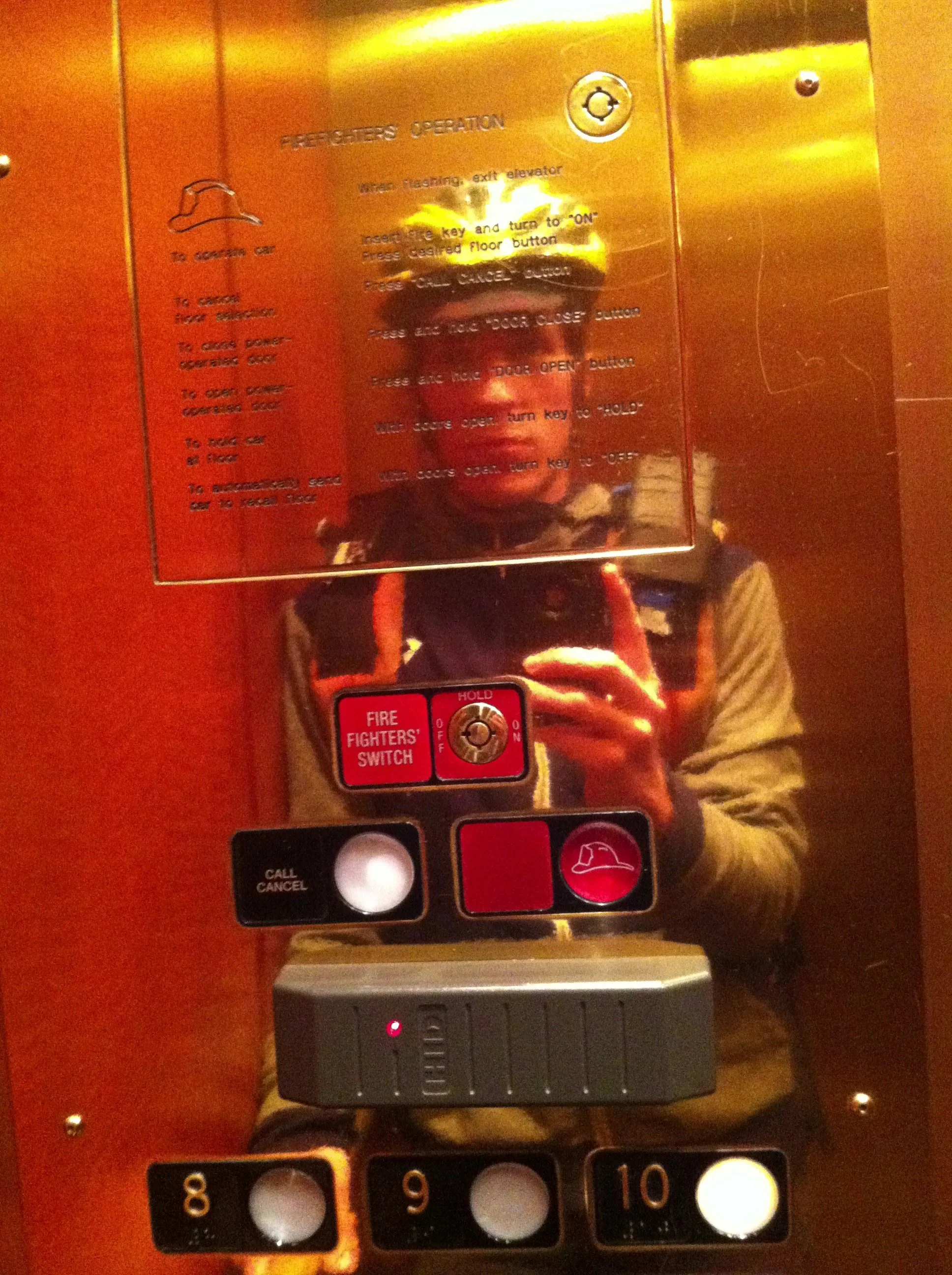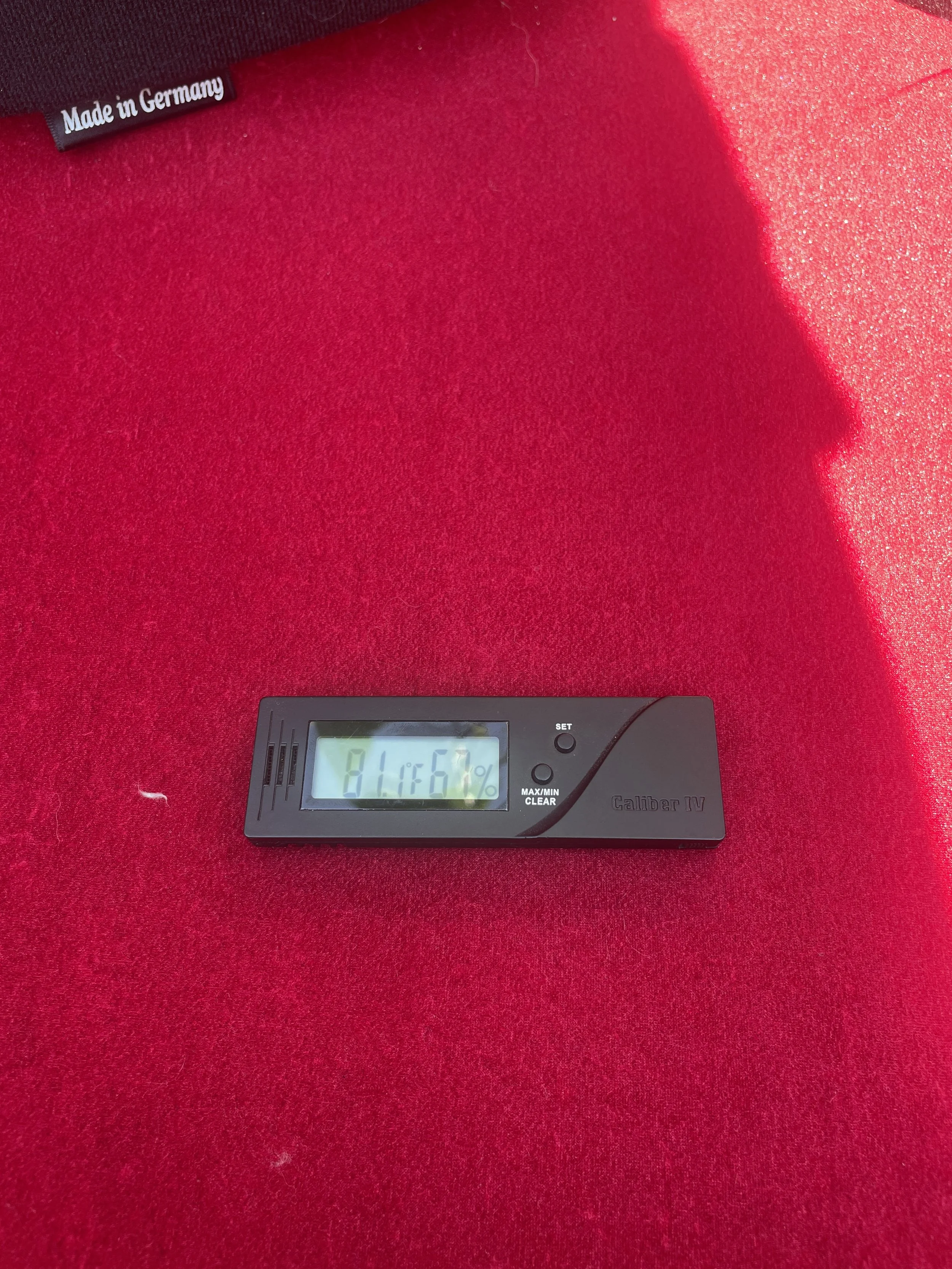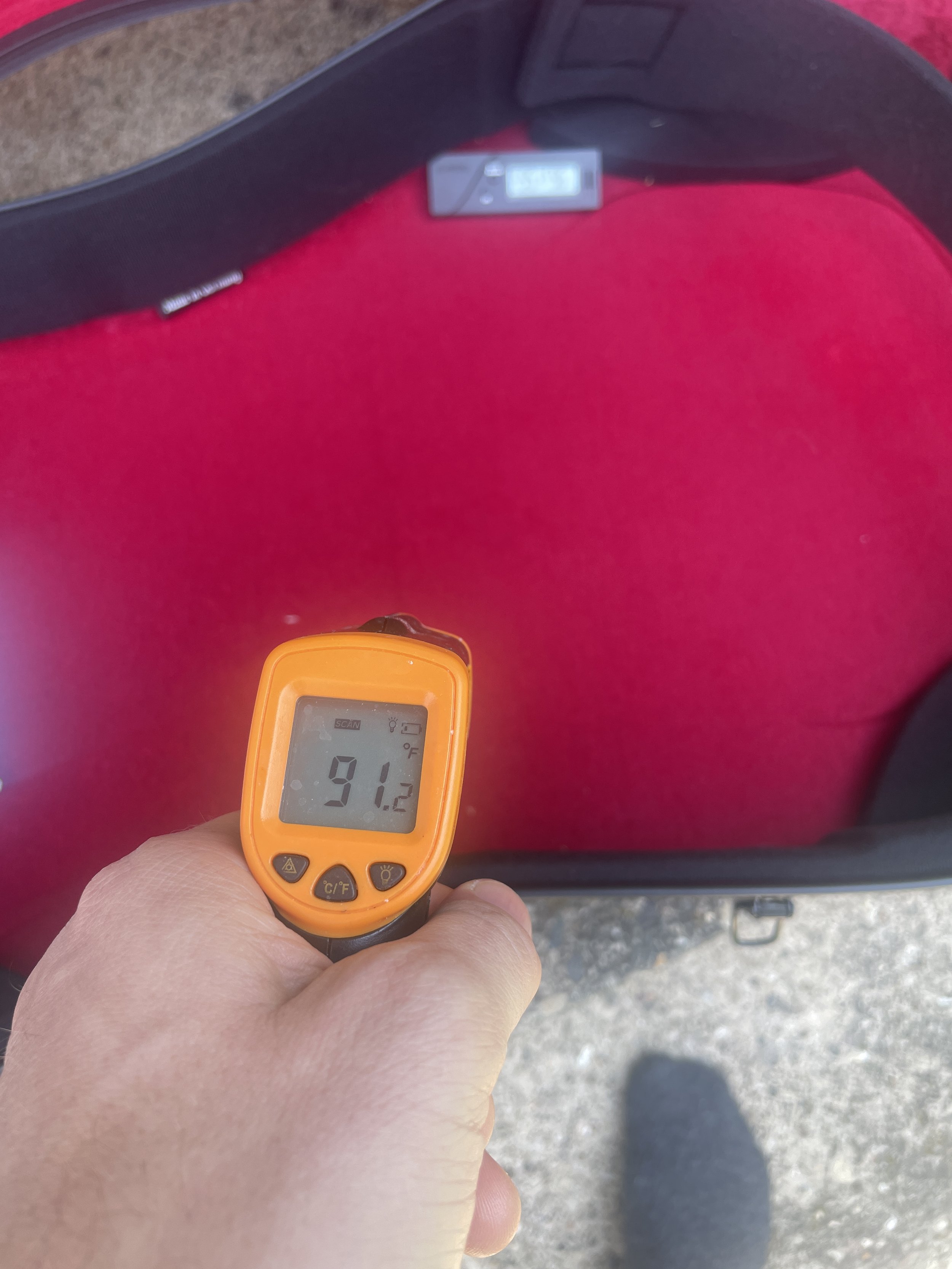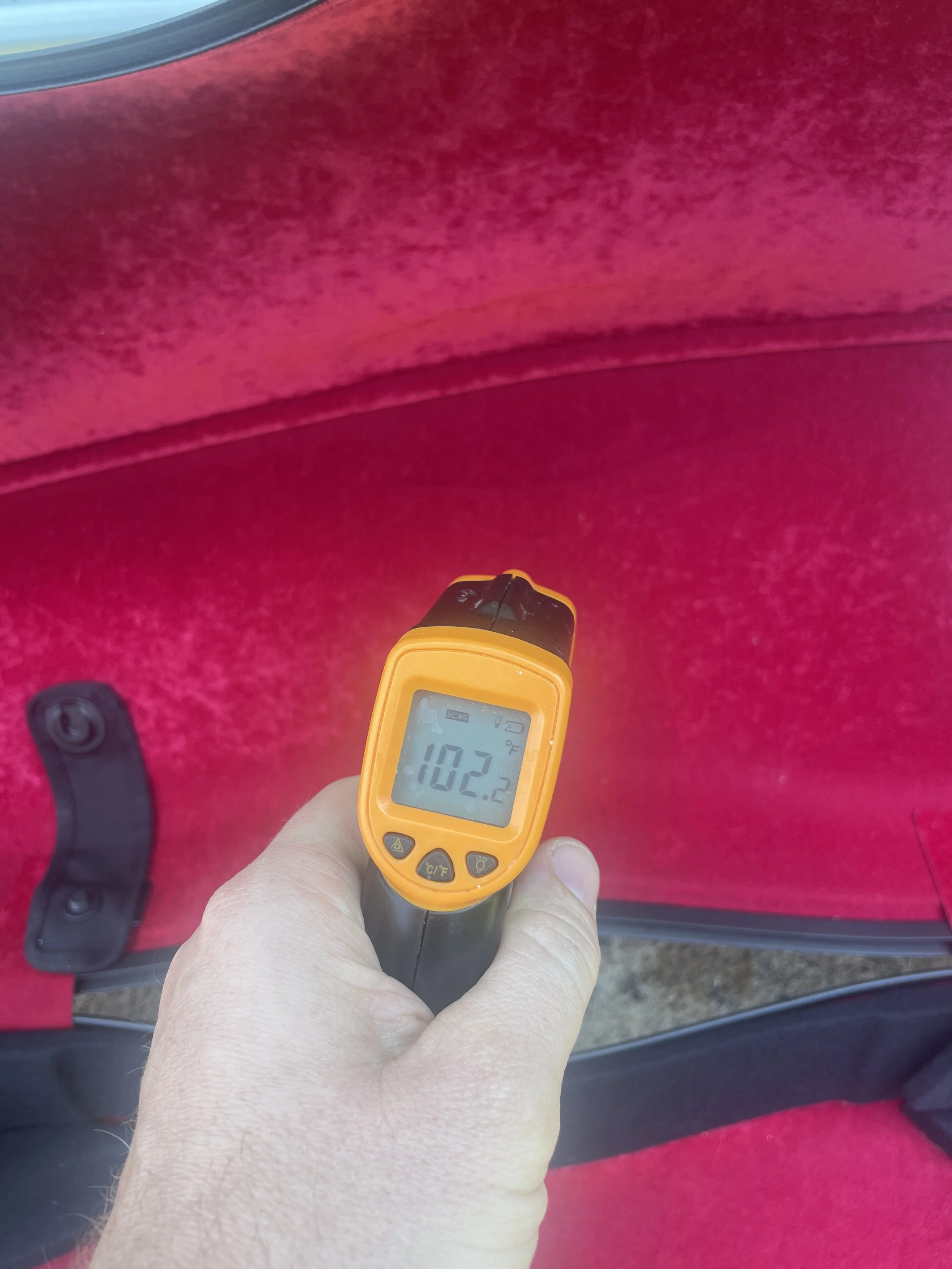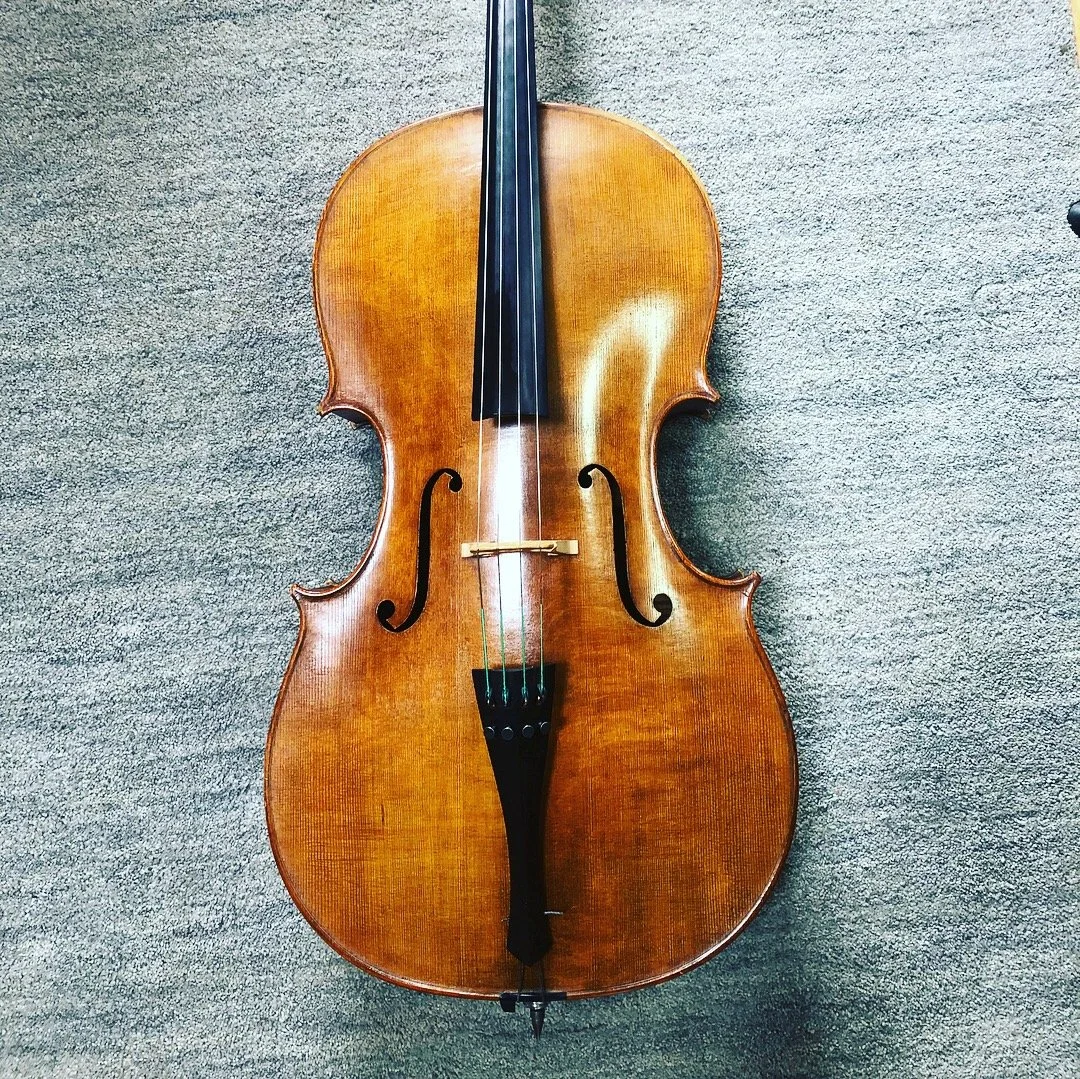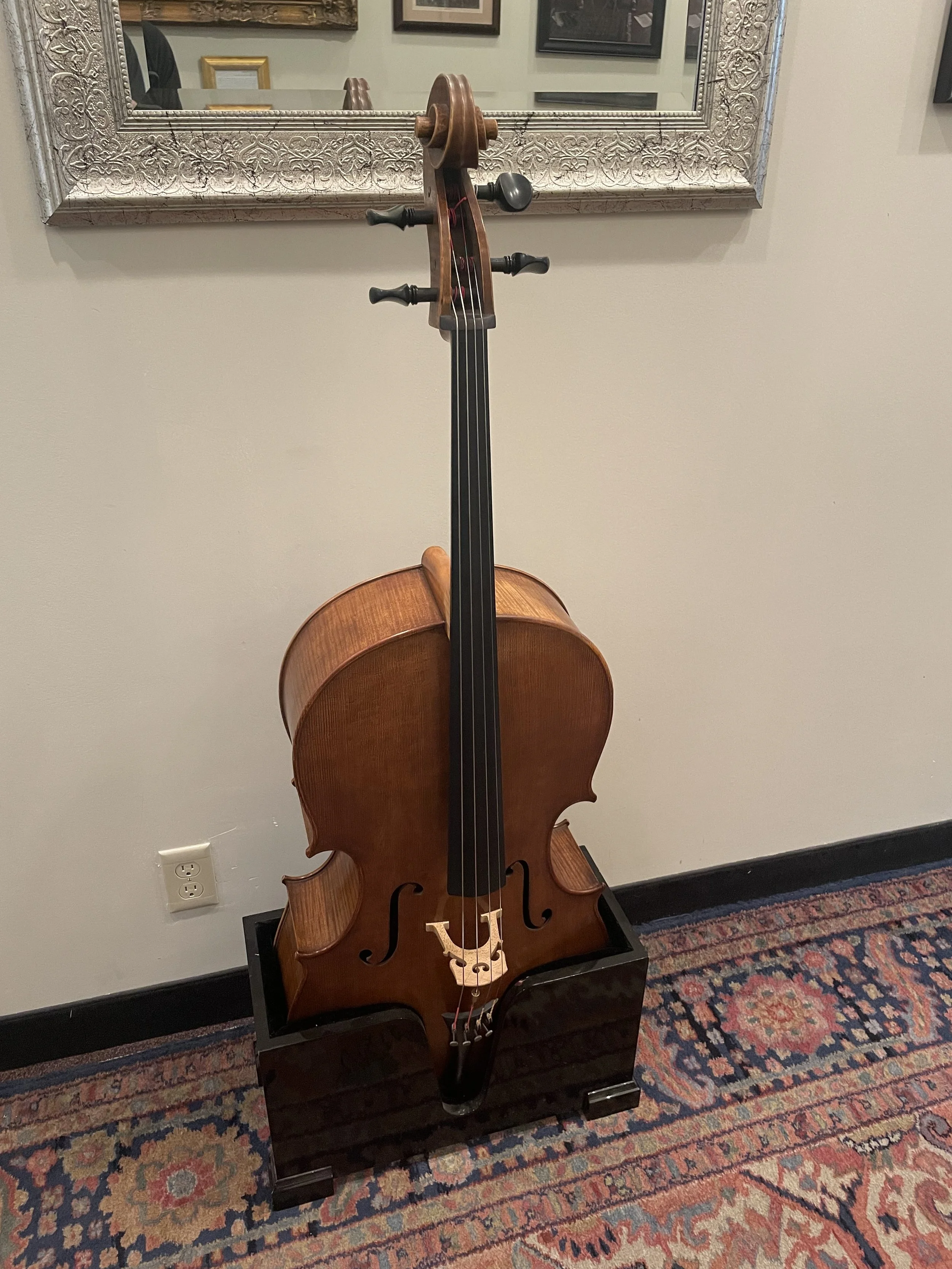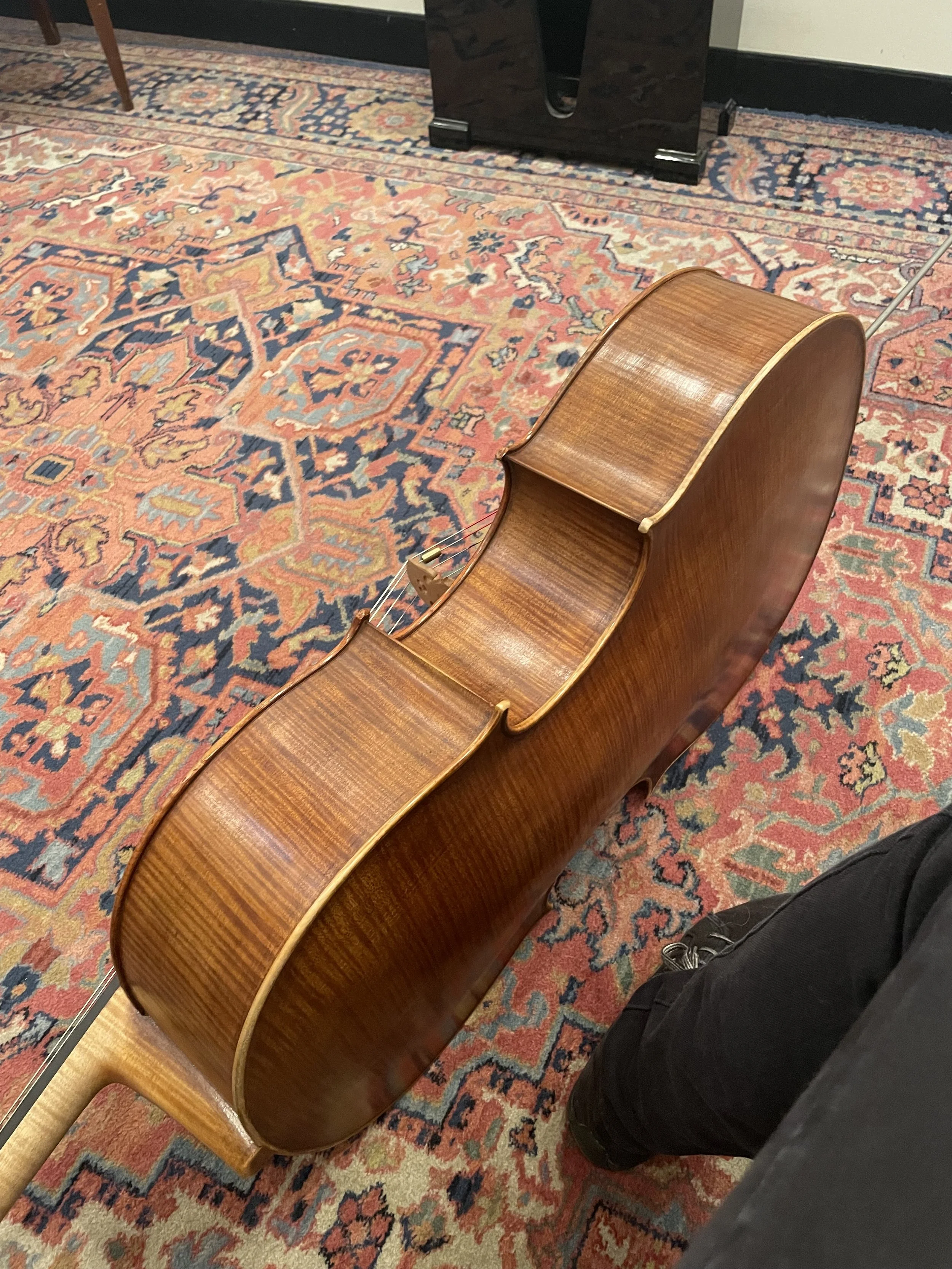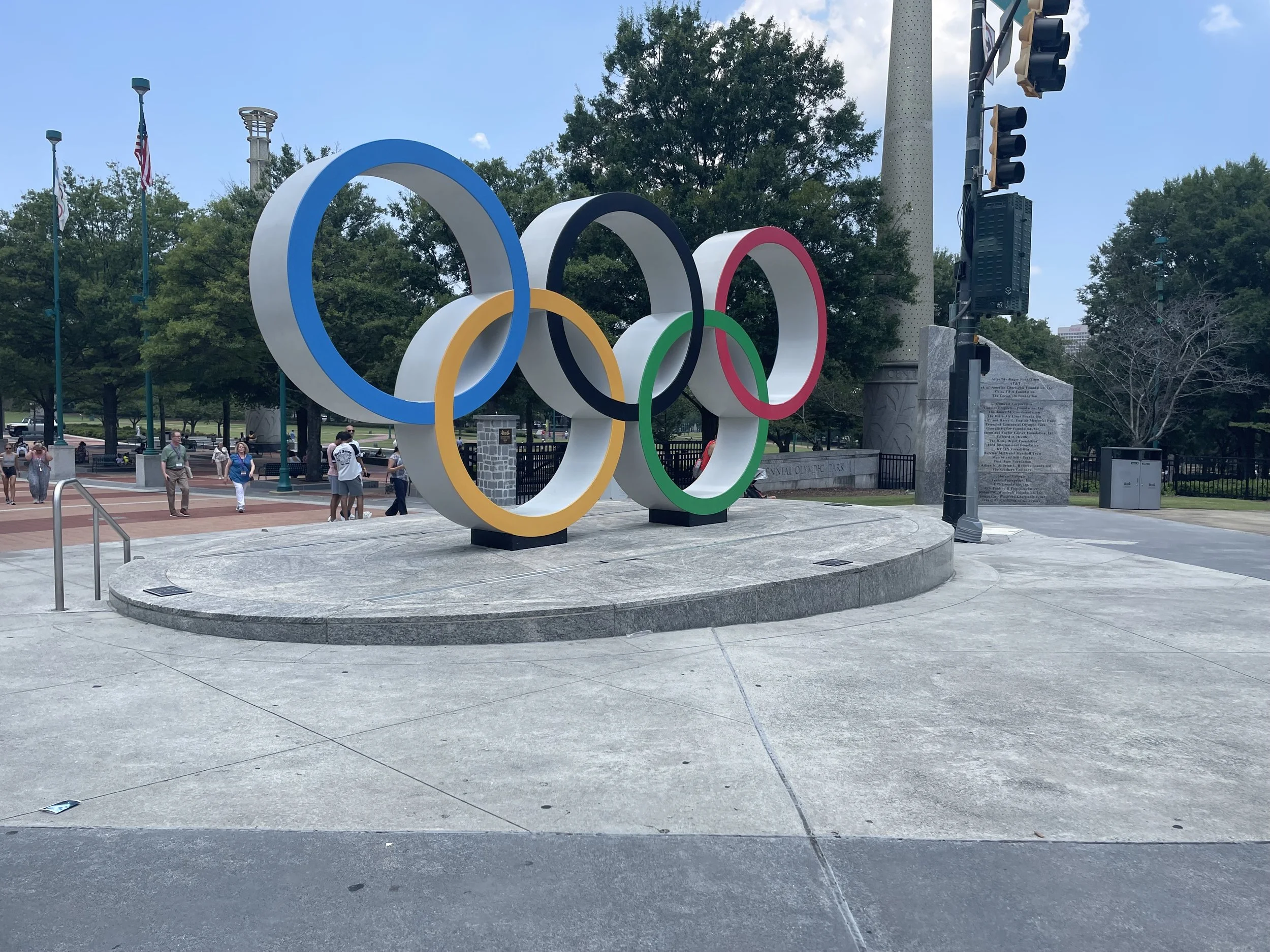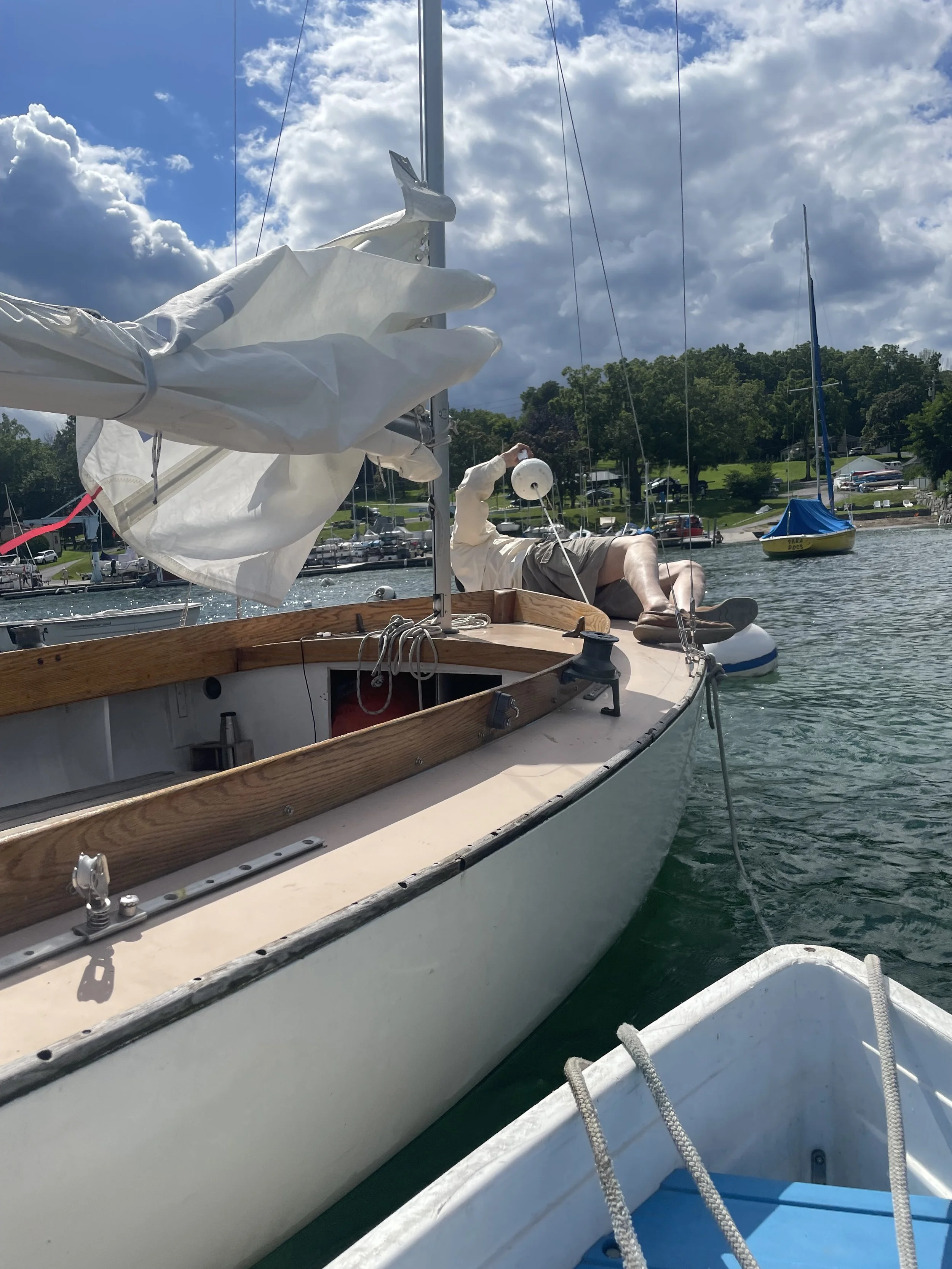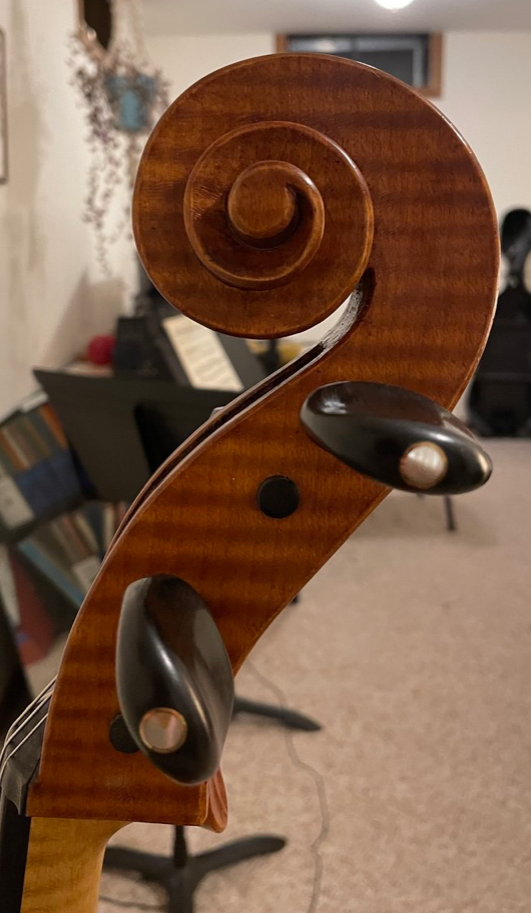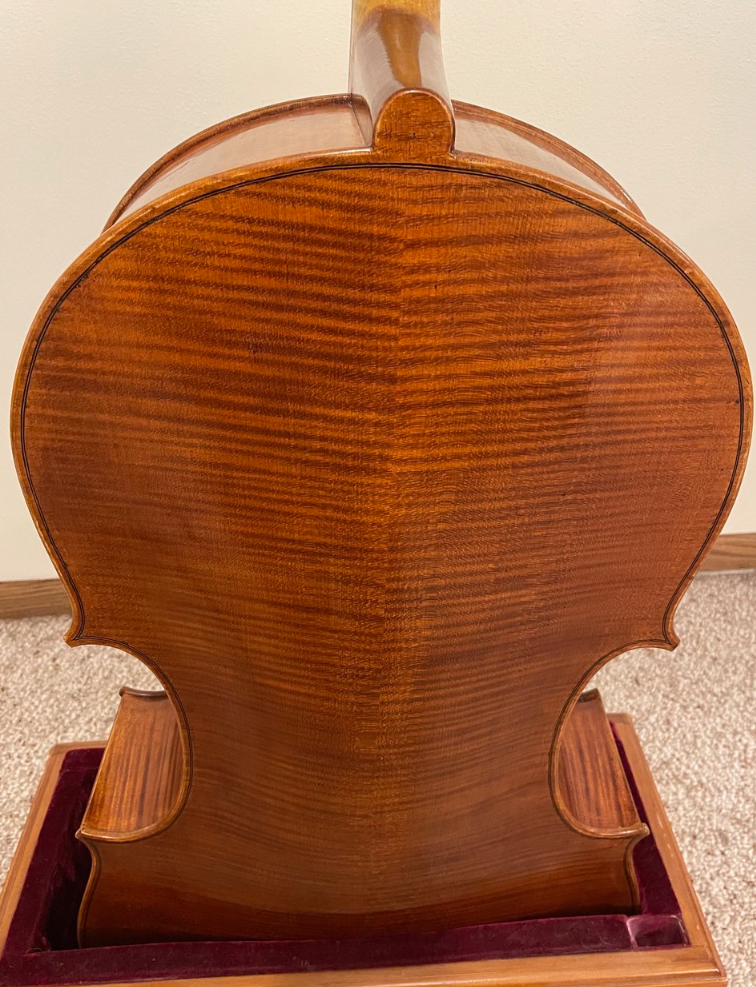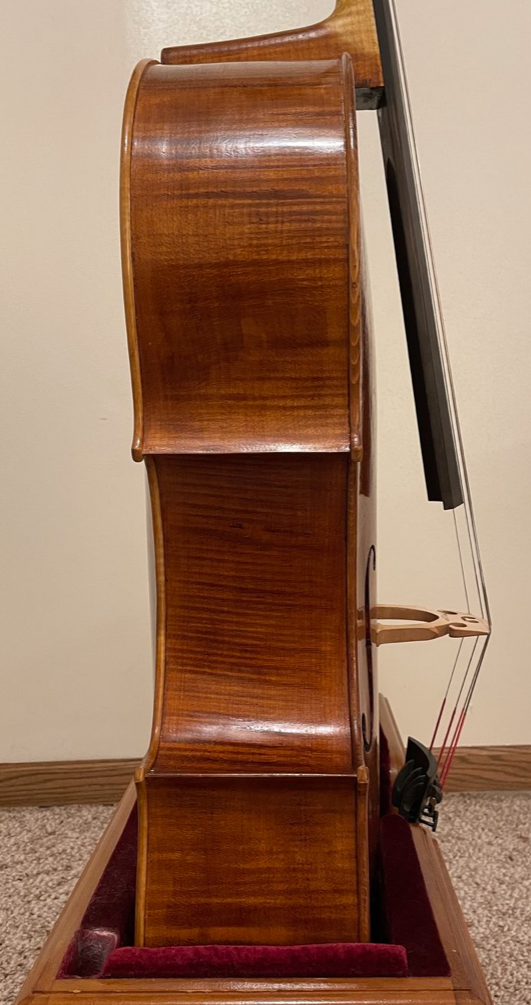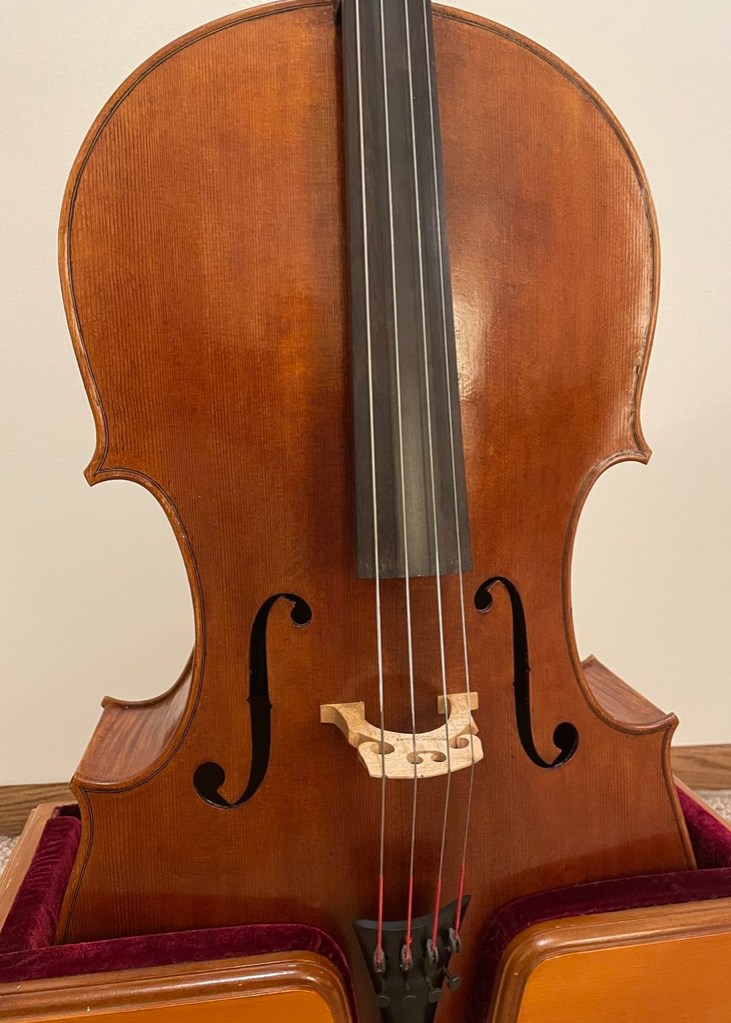Riding to Work
It’s been a couple of weeks since our first concerts of the season. I rode my bike nearly every day except for the Sunday afternoon concert. I was surprised by just how little difference there actually was in my car commute time vs. my bike commute time. On one day I made it to Overture in about 20 minutes which happened because I hit all of the important lights at bike crossings. Overall I would describe the experience as pleasurable. I looked forward to riding too and from Overture every night as a kind of appetizer and dessert on either end of the main course (rehearsal). Sometime the appetizers and desserts hit even better than the main course and I end up wishing I could ride my bike for a living again, but alas, my #messlife is a thing of the past.
circa 2014 in downtown Madison
Still, whenever I ride my bike I have the same feeling of freedom and self-determination that I’ve always had ever since that first bike ride without training wheels in the field next to my childhood house. It makes sense that I ended up making my home in a city that has one of the strongest bike infrastructures in the country and a wonderful cycling community composed of lovely and capable fellow-cyclists.
I thought there would be more kinks to work out in this commuting process. There were some, like the garage door at our parking garage not recognizing my transponder. I fixed this problem by moving it from my handlebars to the bill of my helmet.
I can ride up to the door, have my helmet scanned by whatever camera array/sensor they have present and the door will open automatically for me. I am not the only one who commutes by bike, but my setup is certainly eye-catching and seems to elicit conversations about what I’m doing. I like the idea that I’m doing something that people might find weird at first, but then say “why not me too?”
The main issue that has plagued me thus far is my front brake, which has now been replaced twice. The first brake failed due to oil contamination, but the source wasn’t immediately clear. For those who don’t know this, once the brake pads and rotor get oil on them, they are finished. Since the leak couldn’t be located, the whole brake was replaced under warranty. This happened within about 50 miles of taking ownership. The second failure happened around 600 miles and was similar, but the glazing on the rotor was far more obvious. While we also don’t know where the leak was coming from on this brake, I suspect the cause of these leaks is some kind of over-heating either from being ridden too aggressively or from carrying more weight than the brake can reasonably handle. I don’t know that either of these was the cause, but I suspect that if given the same brake again, I would be likely to destroy it in a couple of hundred miles of riding. The shop says they have not had this issue with other Terns that they have sold. It could just be a bad production run. I don’t feel I am riding this bike aggressively, but I do tend to brake late and hard, which is certainly a recipe for the overheating of brakes, especially when carrying groceries or a cello with accessories.
I managed to get the third brake installed in the middle of last week. The orchestra was in the middle of rehearsals for Mahler 2. I enjoyed getting back on the bike after being forced to drive for the first two rehearsal evenings. A little spin was especially nice after such an intense piece of music. I realize I haven’t really spoken too much about my musical goings on lately, which doesn't mean I am not engaged in them, but just that this has been more engrossing. Perhaps I will get into writing more deeply about my musical adventures once the shine from this new adventure has worn off.
In any case, Tektro upgraded me to an Orion 4-piston brake which initially didn’t feel so hot, but once the pads were bedded in it began to feel very smooth and competent at stopping me. These are the two things I look for in a brake, smoothness and me coming to a stop (atop the bike.) The 4 piston design should theoretically be better and I’ve already ordered a rear replacement of the same type both to increase the quality of smoothness and to prevent the new ride from becoming a Franken-bike before its time. My OCD has a thing for matching brake-levers. We’ll see how well I can install them on my own without contaminating them with oil. I expect it will be as easy as deep frying a Thanksgiving turkey….?
Several people have asked me how the cello has been faring on the rides. I think I’ve ridden to rehearsal now about 12 times and there is no discernible change in the cello. No seams have opened, the soundpost has stayed put and the varnish has not melted. If I’m truly honest with myself, I am surprised by this. I wasn’t expecting any major damage of course, but I did expect the jostling to make a difference in the adjustment of the cello. Maybe it has, but it’s been so subtle that it’s barely discernible and for a cello that has been relatively sensitive to change, this is unexpected. A friend asked me about this recently and I commented that I thought maybe the bouncing it experiences during riding is actually not any worse than what it experienced in the back of my car. I don’t know. This is not a scientific assessment, but me just supposing that something might be true. My car is very stiff, so this isn’t saying much. Speaking of which, if anyone wants to buy a heavily modified 2013 WRX….use the contact form.
I am attempting to use a car as little as possible and as the days get shorter and colder I will be riding to and from rehearsal in the dark. I bought some DOT rated reflective tape, the kind that is used on school buses and police vehicles to add to my case so that I can increase my visibility when riding with the cello. The lights on the bike are bright and the tires and panniers have reflective material on them, but when I see other cyclists riding around at night, I am struck that even with lights and reflective things, they are often barely visible. The ones without these things are only visible as a silhouette, riding around like a black hole in the night. I tried to balance my safety with some sort of aesthetic sense in my application of the reflective tape and I think I achieved something that is both functional and visually interesting. It is also quite easily recognizable backstage.
So with not too many troubles to shoot, I expect this to continue smoothly for a while at least. MSO has a youth concert coming up next week and then the Madison Opera is doing La Boheme, which I am listening to as I write this. This is an Opera my parent listened to a lot when I was a kid so it exists down there in the recesses of my mind, but this will be the first time I am able to bring it to the surface, which is exciting. In November I am playing principal for a concert with our first guest conductor/prospective Music Director of the season, Robert Moody. Our guest artist is cellist Alban Gerhardt, a hero and quasi-doppelgänger of mine. I was preparing to play the solos from the Rosenkavalier suite for that concert, but apparently that piece is not programmed until January and I won’t be playing principal on that concert. Wishful thinking I suppose. Perhaps I should write an article on the sad, disappointing and stressful life of the assistant/associate principal player next. I’m kidding, I love to sit where I sit, but it’s a unique experience that I think some would find it interesting to read about it.
Doesn’t look great, but works? Sometimes
New 4-piston Front Brake
a tasteful application of reflective tape?
A look at the capital from a park I ride by on my way to work
First day of school
My lovely little Guadagnini copy. Happy as a clam who has been secretly riding a bicycle

